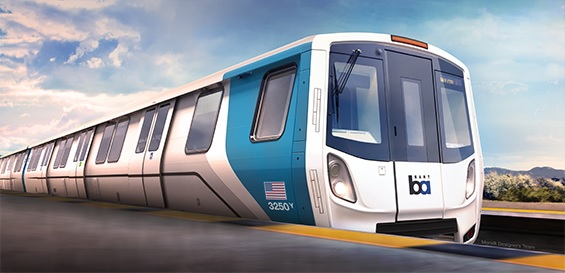Taking a car costs less than taking three different transit systems from Oakland to SF. There’s something very wrong here

By Emily McPartlon
DECEMBER 22, 2015 — I regularly commute from Oakland to San Francisco for both work and school. It takes less time and is actually cheaper to drive – by myself, in a private car — than to take public transportation.
This is a serious problem: If we want to discourage the use of private automobiles, which are a major source of carbon emissions and contribute significantly to climate change – we have to make regional transit work better.
I take three independent transit systems to travel approximately 12 miles. I pay $2.00 to ride an AC Transit to BART, $3.30 for BART into the city, and $2.25 to take Muni in San Francisco; a total of $7.55 one-way. It’s the same going home, so my daily cost is $15.10.
Commuting on public transportation takes far too much time. I can spend anywhere from an hour to two hours each way – and a lot of that depends on unreliable connections. At some times of day, it’s worse.
I’d rather not drive into the city, but look at the numbers: The round trip costs $6 in toll fees and between $2 and $3 for gas. If you use the AAA figure for car maintenance, I’m paying 46.4 cents a mile – oh, and I’m saving as much as an hour of my time.
So I calculate that it’s less money, and less time, to take the alternative that we all agree is the wrong one. How does that make sense?
Help us save local journalism!
Every tax-deductible donation helps us grow to cover the issues that mean the most to our community. Become a 48 Hills Hero and support the only daily progressive news source in the Bay Area.
After the 1906 earthquake and fire, San Francisco and the Bay Area attempted to build a transit system modeled after Manhattan’s. Catalyzed by the 1915 Panama-Pacific International Expo, the Tunnel Commission proposed to build five tunnels across town as well as beneath Fort Mason and Twin Peaks and to expand the existing railway lines. The Key System was created to link the East Bay to SF, and trains ran across the Bay Bridge.
But after WWII, a corporation funded by General Motors, Firestone Tire and Standard Oil bought the Key System, dismantled it completely, and replaced it with a bus system that was far less efficient.
Although BART and other transit systems have been created since the 1950s, many of the same issues facing the transit system in the 1900s still exist today. There is very little coordination – and every study shows that ridership declines every time people have to transfer.
According to a recent study conducted by SPUR, ridership of public transit per-capita has declined in the Bay Area from an average of 79 trips per person in 1991 to 68 trips per person in 2012, a decline of 14 percent. In other regions of the US, ridership has increased.
Why? For one, the Bay Area’s public transit system is very complex. There are more than 24 independently operated public transit agencies, each with different schedules, maps, fares, uncoordinated planning, and investment. The complexity of the system decreases incentives and reduces ridership, particularly when the rider needs to make a transfer.
According to SPUR, weekday Clipper transfers from AC Transit to BART average 4,505 per day (about 6.5 percent of AC Transit’s Clipper riders), 15,445 Clipper riders transfer from Muni to BART daily (about 4.4 percent of Muni’s Clipper riders).
In other words, riders are turned off by inefficient, uncoordinated transfers.
The disparate Bay Area transit agencies need to focus on integration. One step would be to create a unified timetable, with timed transfers at all 149 hubs. The second step would be to have agencies offer a discount for commuters who need to transfer. This process would be simple to implement, as there is already a unified payment system, the Clipper Card. These two simple steps would make the Bay Area public transit system easier and faster to use, and cheaper than driving. These savings could act as an incentive to use public transit and thereby increase ridership, reducing traffic and emissions.
I look forward to the day it costs me less in both time and money to take public transportation to cross the bay.



